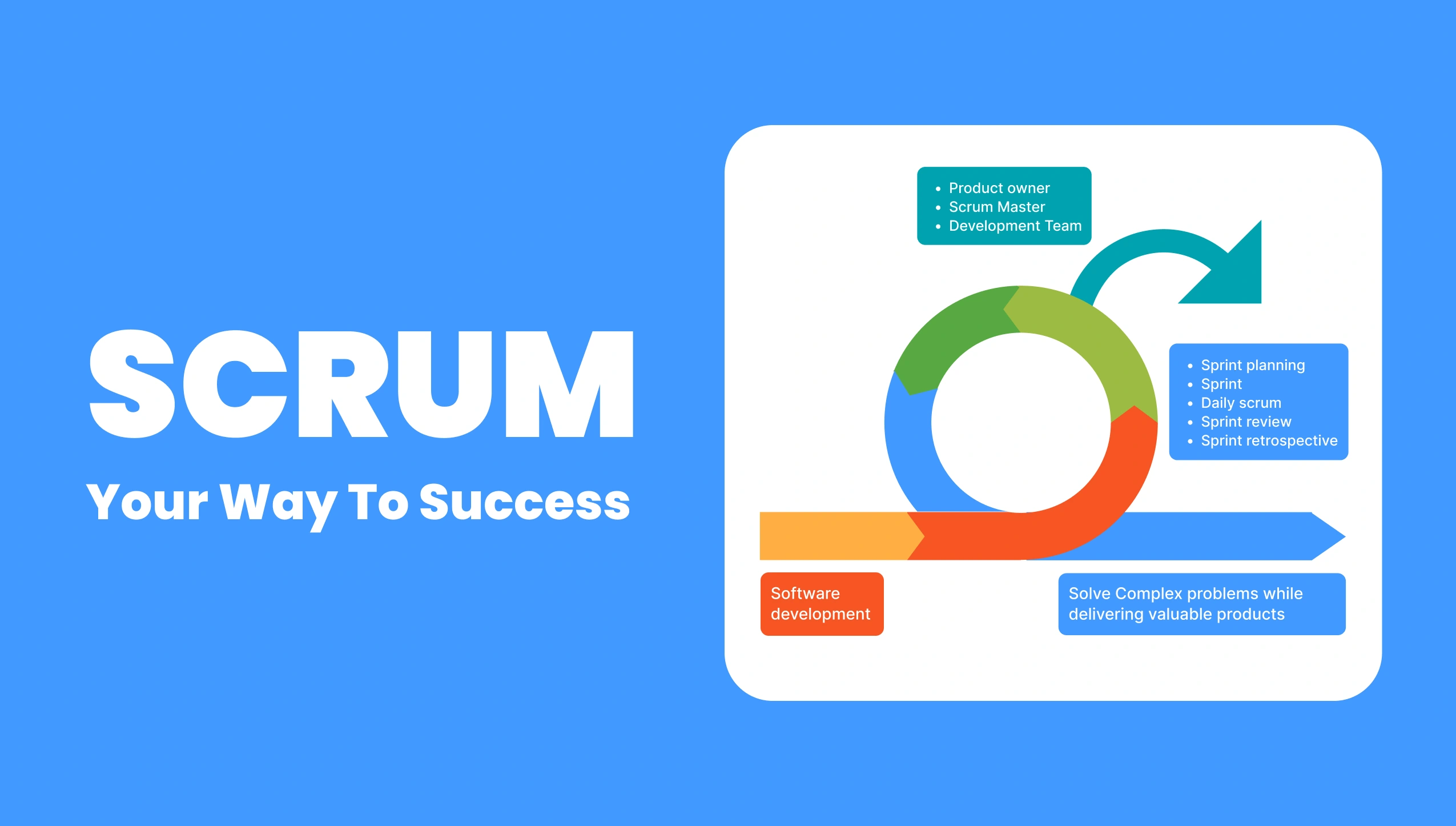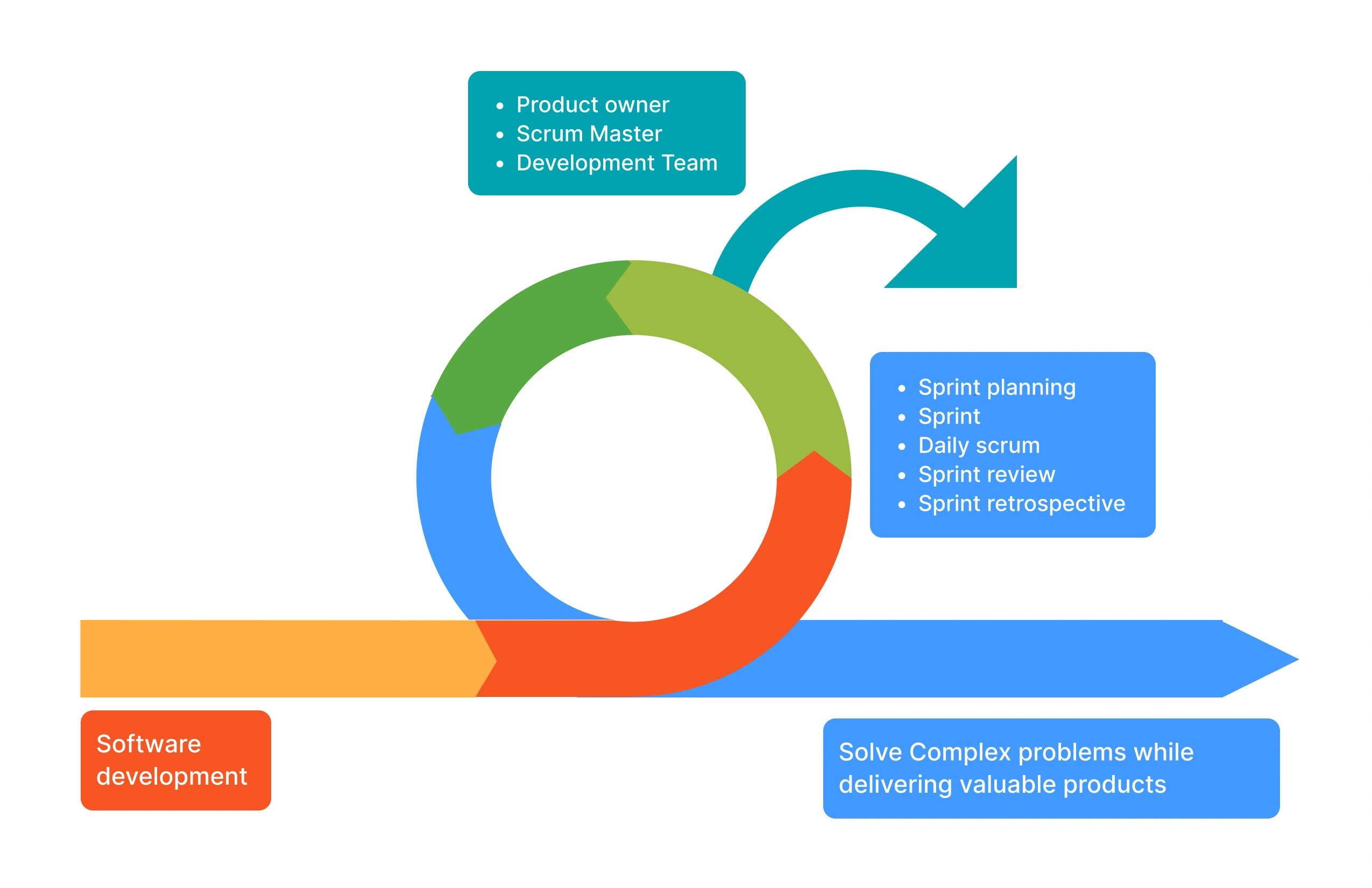Table of Contents
Is Scrum merely a fleeting fad or a sustainable practice in project management?
The landscape of project management has witnessed numerous trends come and go. Among these, Scrum has gained considerable traction and appears to be enduring. Its relevance is particularly pronounced given the rapid pace of technological advancements.
Scrum is a subset of agile project management, emphasizing team collaboration in complex projects. It focuses on making progress through short iterations known as sprints, with continuous refinement to achieve optimal results. Unlike traditional methodologies that require extensive upfront planning, it offers greater flexibility, allowing teams to adapt swiftly to new challenges and ensure deliverables align with current needs. It proves advantageous for organizations that enhance team collaboration, accelerate delivery, and improve customer satisfaction. Its emphasis on quick feedback loops helps teams avoid significant misalignments with business objectives and consistently add value.
The benefits of Scrum include:
- Planning: It breaks down large projects into manageable tasks, enabling teams to set clear, achievable goals and maintain focus.
- Transparency: Daily stand-up meetings ensure everyone is aware of progress, challenges, and next steps, minimizing surprises and maximizing teamwork.
- Flexibility: Ideal for the dynamic technology sector, it embraces change, ensuring that evolving requirements are met without disruption.
Key roles within Scrum include:
- Product Owner: Manages the backlog to prioritize critical tasks.
- Scrum Master: Acts as a facilitator and coach, ensuring the team adheres to the methodology principles.
- Development Team: Executes tasks and brings plans to fruition.
Essential tools are:
- Product Backlog: A prioritized list of tasks.
- Sprint Backlog: The specific tasks to be completed in the next sprint.
- Increment: The cumulative output of the sprint, building on previous work.
The Scrum process follows a structured routine:
- Sprint Planning: Defines the objectives for the next sprint.
- Daily Scrum: Brief daily meetings to synchronize efforts.
- Sprint Review: Presentation of progress to stakeholders.
- Sprint Retrospective: Reflection on the sprint to identify improvements.
Sure, Scrum isn’t perfect.
Implementing Scrum is not always easy. The team must first get everyone on board with the methodology process. Team members must be willing to take the initiative, maintain focus, and collaborate closely with one another. Things can go south very fast if people aren’t dedicated or don’t understand their roles. A major cultural shock can also occur when switching from a standard “I tell you what to do” setting to a “we figure this out together” one.
Moreover, one must consider the dynamics inside the team. Some people may take offense to Scrum’s tendency to flatten the traditional hierarchy, particularly those who are accustomed to making the decisions. As everyone adjusts to the change, there may be some stress. As everyone adjusts to new positions like the Scrum Master or Product Owner, who must guide without taking over, the shift may generate some stress.
Communication is essential. Everyone must be quite transparent about their daily activities. This implies that poor communication may result in unclear objectives and postponed projects. Furthermore, because Scrum emphasizes frequent short catch-ups and feedback loops, it may be difficult for those who are shy to speak up.
Another thing that can surprise the team is becoming acclimated to receiving work gradually rather than all at once. Sharing work that is still in the process may seem unusual to teams that enjoy polishing things until they shine. In addition, stakeholders and clients may require some explanation as to why they are viewing early versions rather than the final product.
Finally, constantly checking in and assessing tasks inside Scrum can seem excessive. It’s not everyone’s cup of tea to feel like they’re under a microscope, and having your work reviewed so frequently might be intimidating.
Despite these challenges, mastering Scrum can improve the situation. Through appropriate training and a strong dedication to its agile principles, teams may effectively address these obstacles and optimize this dynamic methodology.
The Role of a Certified Scrum Master
Now, let’s talk about the role of a certified Scrum Master. Think of this team member as the ultimate cheerleader—except, instead of pom-poms, they obtain a deep understanding of Scrum practices and principles. Their job is to keep everyone focused on the methodology rules, making sure that the process is smooth and everyone sticks to the game plan.
A certified Scrum Master is pivotal in maintaining the integrity of the Scrum process. Unlike a traditional manager, the Scrum Master focuses on ensuring adherence to Scrum practices and principles, facilitating smooth operations, and helping the team overcome obstacles. They serve as a bridge between the Scrum team and external stakeholders, protecting the team from distractions and fostering an environment conducive to self-management and efficiency.
JetRuby to the rescue!
Even if things are going pretty well with your current project management setup, it’s always good to reassess. You know how fast technology and markets are changing; just sticking to the old ways might mean you’re missing out on better. Why not try integrating Scrum into your workflow? It could help streamline things, boost the quality of your products, and make your customers happier.
JetRuby came to the rescue for a project that was struggling with direction and efficiency, thanks to their savvy implementation of this methodology. Initially, the project was lacking a clear prioritization system. This caused the team to waste too much time on minor bugs and overlook the bigger picture, leading to a lack of significant updates and a feeling of stagnation.
Recognizing these challenges, we introduced Scrum, dramatically transforming the project’s trajectory. Starting by gathering extensive feedback and identifying key issues this approach enabled us to craft a detailed roadmap, setting clear and strategic priorities that were previously missing. This roadmap became the blueprint for what needed to happen next, providing a much-needed vision for the project’s future.
Moreover, with the clarity and predictability that Scrum brought to the table, the project team could now focus on delivering important features on schedule. Features were developed incrementally, starting with a basic viable version and then enhancing it step by step. This method not only reduced the prevalence of bugs but also improved the final product, which often surpassed initial expectations. The project continuously adapted based on real user feedback, ensuring that each iteration was more aligned with user needs and market demands. This strategic pivot reinvigorated the project, turning potential failure into a path paved with continuous improvement and success.
Mix a bit of Scrum into your day!
While this methodology is not a panacea, its principles can significantly enhance project management practices. Starting with daily stand-ups can help keep teams accountable and address issues promptly. At JetRuby, we prioritize teamwork and maintain transparent communication with our clients through Scrum rituals, allowing for collaborative project management and successful outcomes.
If you are interested in learning more about our approach, we would be delighted to share further insights.




